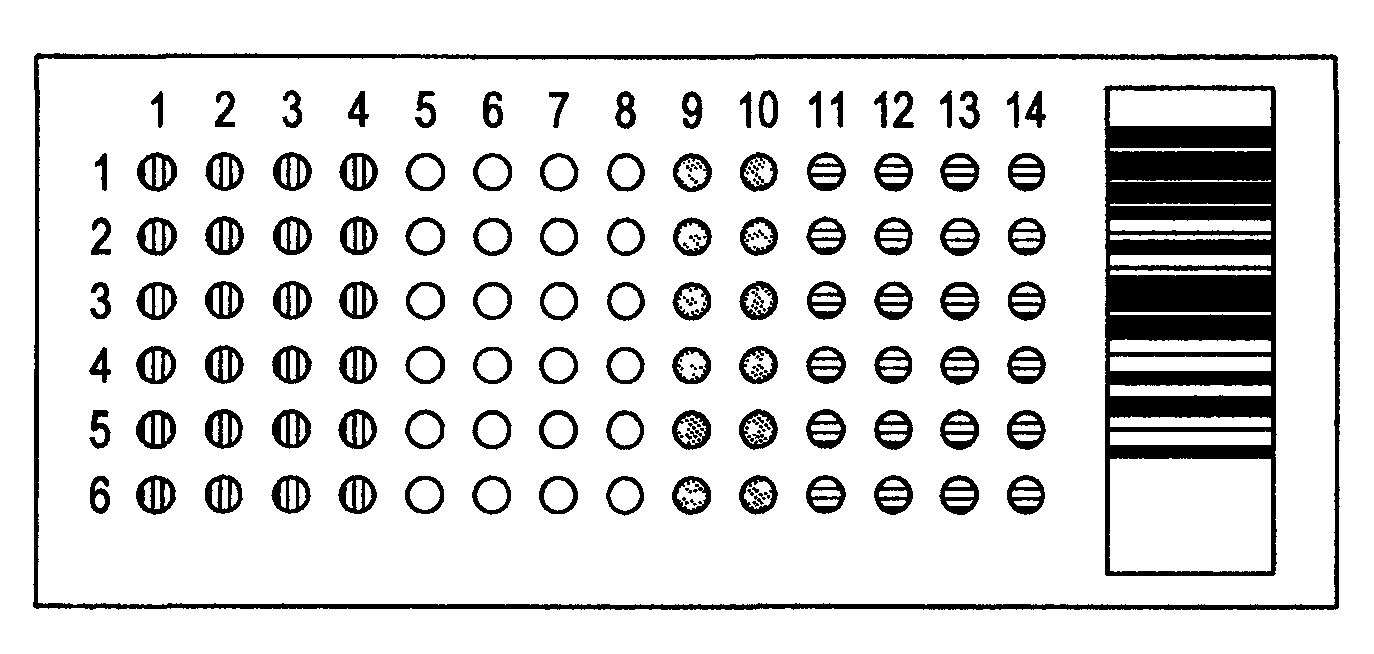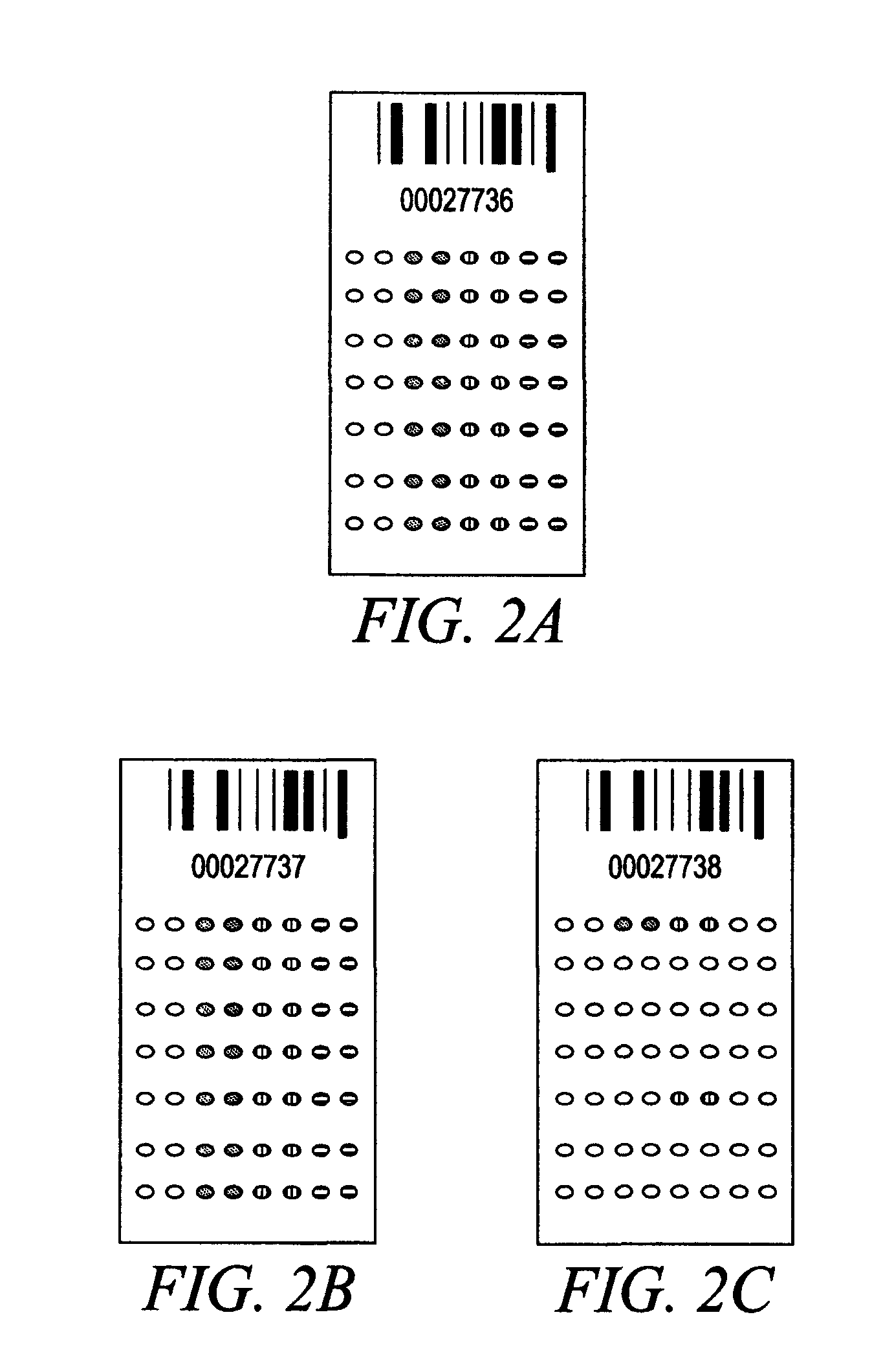Compositions and Methods for Determining Immune Status
a technology of immune status and composition, applied in the field of compositions and methods for determining immune status, to achieve the effect of reducing costs and reducing samples
- Summary
- Abstract
- Description
- Claims
- Application Information
AI Technical Summary
Benefits of technology
Problems solved by technology
Method used
Image
Examples
example 1
Production and Validation of Proteome Microarrays
[0129]One of the most difficult tasks in developing a recombinant protein subunit vaccine or DNA vaccine, or when selecting an antigen or set of antigens to use for diagnostic and / or immune status monitoring purposes, is the identification of the antigens that will stimulate the most effective immune response against the pathogen, particularly when the genome of the organism is large. It is not practical for large viruses or bacteria, which encode hundreds or thousands of antigens, to test these antigens one at a time. Recently, however, protein microarrays have been used to screen hundreds of proteins simultaneously for assessment of their relative reactivity with serum antibodies elicited in autoimmune diseases, cancer, and subsequent to infection. To date, however, immune response to agents such as smallpox, hemorrhagic fever viruses, tularemia, anthrax, and plague have not been characterized using microarrays of large numbers of p...
example 2
Immunogen Microarrays
[0222]Proof of principle was demonstrated in conventional ELISA by determining antibody titers in purchased clinical diagnostic assay control reagents for IgG and IgM rubella-specific antibody on microtiter plates coated with recombinant rubella peptide antigen. Prototype protein microarrays were then prepared using a purchased collection of off-the-shelf recombinant proteins and inactivated virus preparations, displayed in dilution series in duplicates and spotted on nitrocellulose-coated slides (GENTEL® BioSciences, Incorporated). Array controls were expanded to include dilution series of purified immunoglobulins and Fab′2 fragments of anti-immunoglobulins from / for a variety of laboratory animals, in addition to the customary human-derived and human-specific reagents. Forty-six microarrays were used in IRP studies with normal animal and human sera, known high-titer human sera, clinical assay calibration reagents, and monoclonal antibodies.
[0223]Viral antigens ...
example 3
Validation Microarrays
[0230]Proteins were selected from those previously found to be either highly immunoreactive with specific antisera or completely unreactive with all sera tested, and expressed in a cell free wheat germ system. Sets of such proteins from four pathogens (Yersinia pestis (KIM), Vaccinia var. Copenhagen, Monkeypox var. Zaire 96-1-16, and Bacillus anthracis (Ames)) were assembled from proteins expressed in either insect cells or E. coli bacteria and in the wheat germ cell free system, and spotted in dilution series on glass slides that have been coated with a thin layer of nitrocellulose (GENTEL® BioSciences, Incorporated). A dozen of these arrays were used to profile reactivities with normal and immune human sera, and normal and immune rabbit sera. Results for corresponding protein pairs were compared and used as part of an internal validation of the cell free wheat germ protein expression system. For Vaccinia and Y. pestis proteins, immune profiles on proteins arr...
PUM
| Property | Measurement | Unit |
|---|---|---|
| total volume | aaaaa | aaaaa |
| total volume | aaaaa | aaaaa |
| volume | aaaaa | aaaaa |
Abstract
Description
Claims
Application Information
 Login to View More
Login to View More - R&D
- Intellectual Property
- Life Sciences
- Materials
- Tech Scout
- Unparalleled Data Quality
- Higher Quality Content
- 60% Fewer Hallucinations
Browse by: Latest US Patents, China's latest patents, Technical Efficacy Thesaurus, Application Domain, Technology Topic, Popular Technical Reports.
© 2025 PatSnap. All rights reserved.Legal|Privacy policy|Modern Slavery Act Transparency Statement|Sitemap|About US| Contact US: help@patsnap.com



